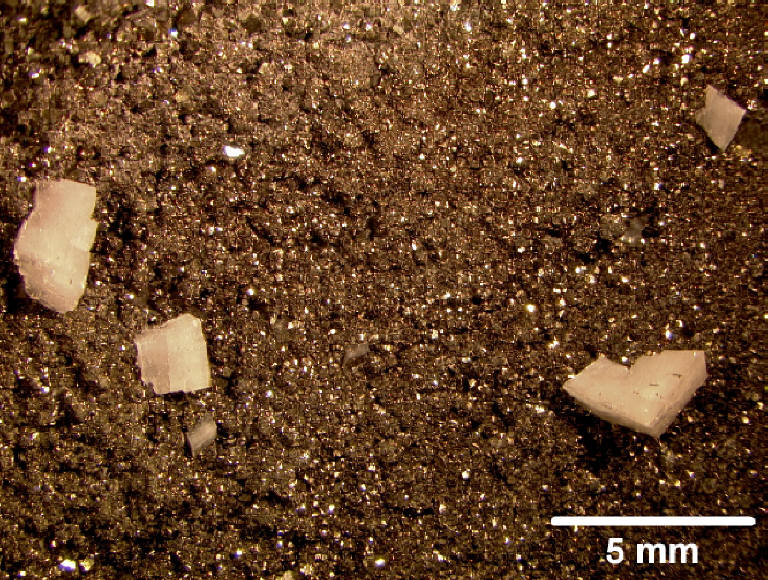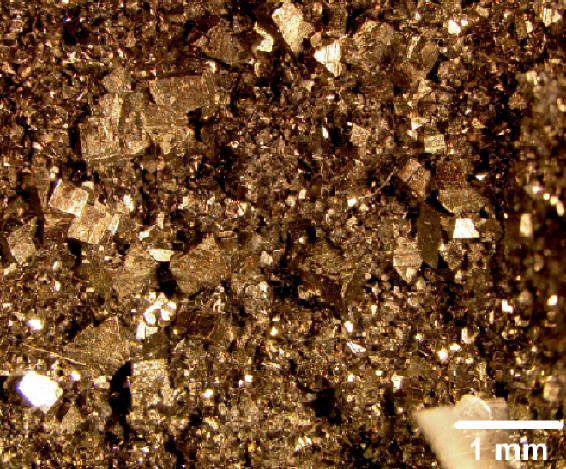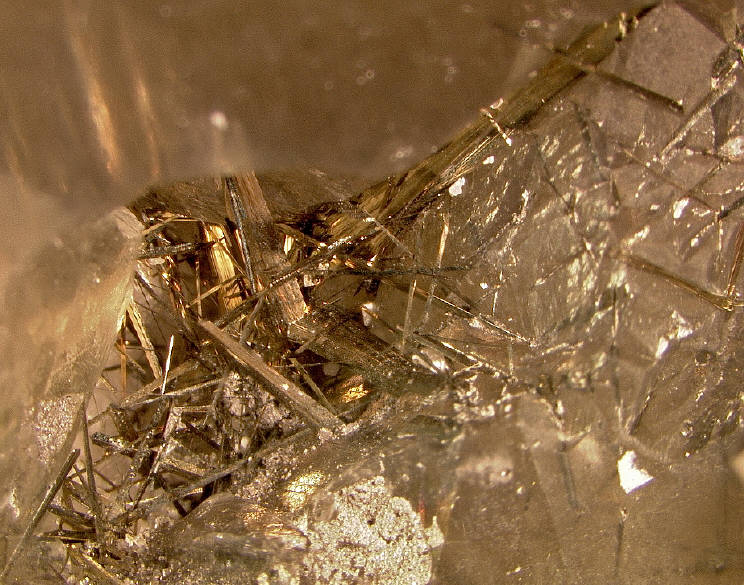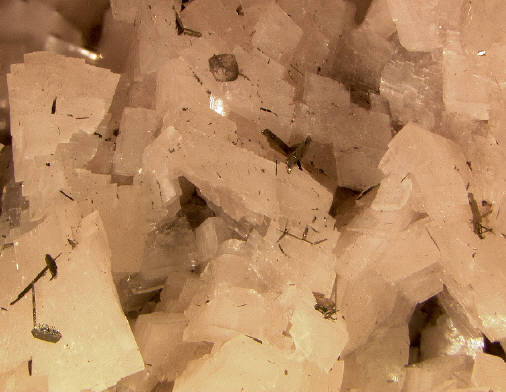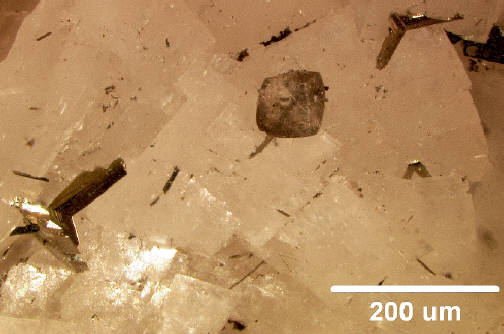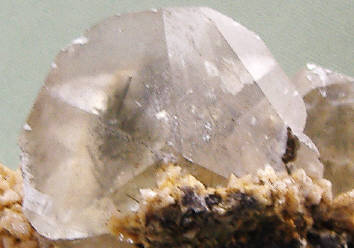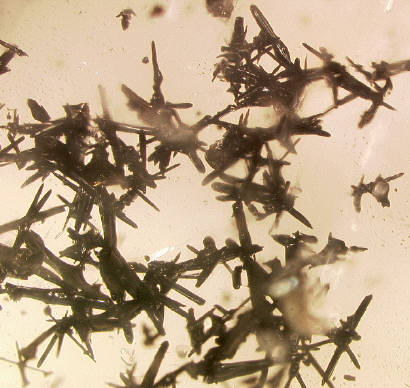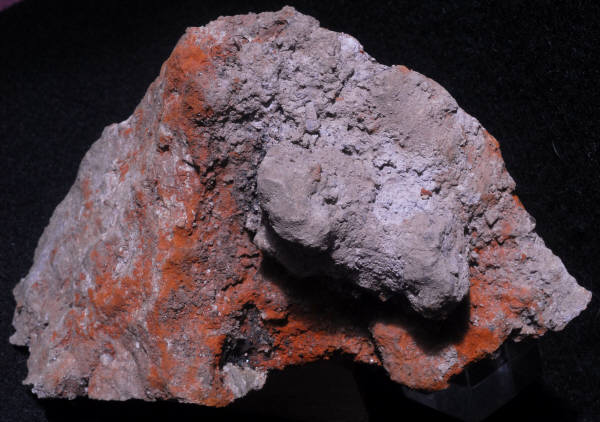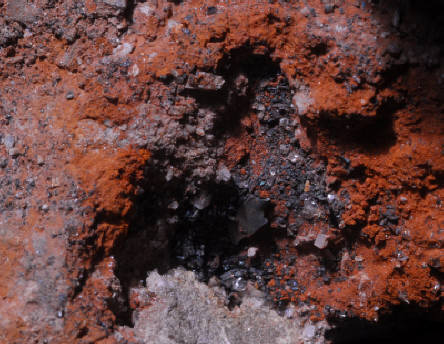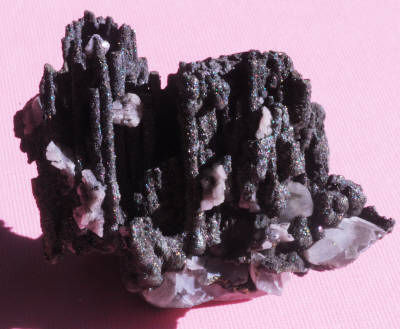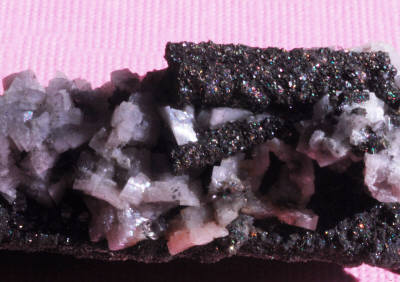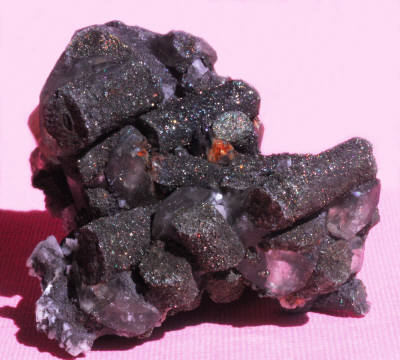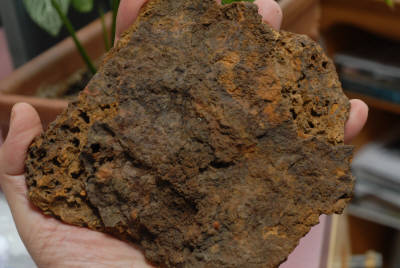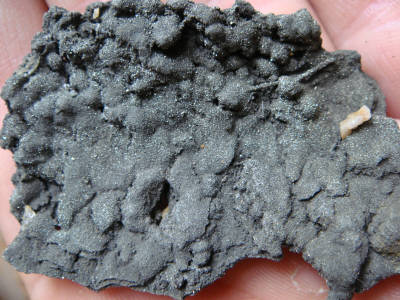This site was last updated on July, 2010
The best website on "Herkimer Diamonds"
A sulfide is a mineral that has sulfur in combination with a metal. Pyrite, or "fools gold", is iron with sulfur. Because of the ground water action that has occured throughout the Herkimer district the sulfides are often eroded away and what is left is rust staining or a reddish coating. There are two episodes of sulfide mineral formation - one before the large second phase dolomite and one after. Some times the second phase sulfides are preserved as inclusions in calcite (please visit the calcite page) and in Herkimer diamonds (please visit the inclusion page).
Please help with picture and specimen donations!
Other Minerals - Sulfides (such as pyrite) from Herkimer deposits
A public service project always open to input from the community interested in Herkimer diamonds.
If you have nice sulfide mineral photos, or spare specimens, please consider making a donation to help advance the knowledge of these unique mineral deposits.
Web page author - W. David Hoisington, Ph.D.
This is a photo of the first sulfide phase. They are very small crystals coating first phase dolomite and underneath second phase dolomite, which is clearly seen above as white rhombs. Specimen from HBQ, microscope photo, DrD, 2008. Below is a close up from the above.
There are both block shaped crystals (probably pyrite) and pyramid shaped crystals (probably marcasite). Note the multiple tips on the marcasite, a type characteristic for this mineral (at the arrow).
To the left, another specimen from AD, donated by Bill & Anne (2008). It is an ugly specimen and these seldom get saved by rock hounds. This is from the floor of a pocket and it has not been cleaned. The layer of red brown is probably weathered sulfide crystals that were at one time metal looking very much like what is shown in the above photos. The specimen is coated with little fragments of rocks along with mud which probably happened at the same time that the sulfides turned from metal to red ochre. Some of the mud is original to the formation of Herkimer diamonds (and some is not), and the fragments are probably original to the pocket - although moved around by ground water. Photo, DrD, 2010.
A close-up of the ochre taken at the yellow arrow is shown below. Photo below covers 2 cm.
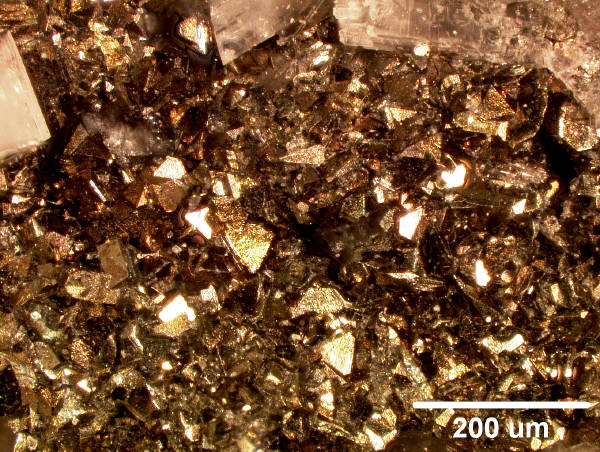
To the right is another microsope photo of phase one sulfides with chalcopyrite crystals, the bright golden triangles (arrow points to them). They are very small and even hard to see with a hand loop. This specimen was donated by Bob (2008). Photo, DrD.
All of the mineral phases represented in the general mineral diagram are probably found in some form at every Herkimer Diamond mine in the district. Yet it appears that somes phases are clearly more pronounced at certain mines versus others.
Click on the minerals tab at the top to see the general mieral sequence diagram
The best examples of the sulfide phases come from St. Johnsville, due to the fact that weathering has not been as severe there. But, with some careful examination you can find features that show phase one sulfides were at at other mines. This is shown in the photos below.
Note: Although mud is common on the floor of pockets, it is not common to find remains of phase one sulfides (except at HBQ).
As with phase one sulfides, the best come from St. Johnsville (HBQ) and the next three photos are from a single specimen purchased in 2008. The specimens show long needle shaped crystals and according to the NY State mineralogist (personal communication from Marian Lupulescu, 2008), these are marcasite. It is a very unusual shape for this mineral and indicates a shift in the fluid chemistry from when phase one sulfides were being formed. Photos, DrD., 2008.
In the above photo you are looking through a natural hole at the base of a large calcite crystal (see the calcite page for a picture). Most of the time these fragile needles are destroyed during the cleaning of the specimen. But throughout the Herkimer Mining District they are preserved inside calcite - and sometimes inside Herkimers. They will often appear gray inside the calcite and black when inside the Herkimers (see photos below).
The two photos onthe left are from the same HBQ specimen as the above photo. These marcasite needles are on top of second phase dolomite. Most are broken, but the close up shot shows an interesting parallel growth pattern of bevel terminations (lower left corner - see the red arrow). In the center is a small single rhomb of calcite that has needles in it. Photos, DrD, 2008.
The two photos below show marcasite (second phase sulfides) inclusions. On the left the marasite needles are inside a calcite crystal - specimen from HBQ, purchased 2008. On the right is a close-up of needles inside a clear Herkimer (from AD, 1992). A picture of this Herkimer is on the inclusions page. The blur is from the top of the crystal face. Photos, DrD.
Probably some of the most interesting sulfides are the odd forms of marcasite found at the HBQ. The four photos below are of marcasite specimens donated by Frank (2010 - except bottom left, which remains in Frank's collection). Photos, DrD.
To the left are two comparison photos of phase one sulfides. The top (from TCR, collected 2010, photo Dr. D.)is a plate of what probably used to look like the photo on the bottom (from HBQ, photo Frnk, 2010). In the top photo there is no host rock. It is just a solid chunk of "rust" (probably limonite and goethite). The bottom photo also has no host rock and is just a solid chunk of fresh unaltered sulfides - pyrite and marcasite.
